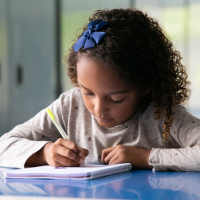For preschoolers to grow mentally, emotionally, and physically, sensory activities are crucial. Play is the main way that sensory activities engage a child’s senses of taste, smell, touch, sound, and vision. These exercises improve gross and fine motor abilities and spark the imagination. It also aids with language learning. Children learn to solve problems and explore their surroundings via a variety of sensory experiences. It can be auditory games with musical instruments or physical play with sand and water. This article explores a range of sensory activities for young kids. It offers helpful ideas that parents and teachers may use in their everyday lives. By doing these activities, we can create enjoyable learning experiences. It will meet the different requirements of toddlers and preschoolers.
What is Sensory Play?
Your kid uses their five senses—sight, hearing, taste, touch, and smell—to join with the outside world. An activity that focuses on waking and engaging these senses is known as sensory play. Your child would discover and engage with the world via their five senses. Play comes in many forms, and sensory activities are one way that kids learn.
Why is Sensory Play Important?
An essential part of a child’s learning and development is sensory play. Your capacity to remember information via your senses plays a major role in learning. Playing with the senses is a lot of fun. It also provides several advantages for a child’s growth, such as:
- helping kids in realising how their activities impact the world around them.
- improving problem-solving skills, memory, difficult activities, and brain growth.
- using tactile play to help kids develop their fine motor skills—useful when they wish to handle pens or use scissors, for example.
- promoting the development of social, communication, and language skills.
- improving one’s capacity for observation and recall.
- stimulating original and innovative thought.
- emotional control by having a soothing impact on kids’ angry or nervous emotions.
Some kids could need or be sensitive to certain senses. Since each kid with sensory learning is unique, their needs may change with time.
Fun Sensory Activities for Toddlers
Toddlers benefit greatly from sensory exercises. It enhances their cognitive development, social interaction, and fine motor abilities, among other areas of development. Try these enjoyable and engaging sensory activities for toddlers:
- Create A Sensory Bin: A sensory bin is a container that is full of various items with different feels and textures. Sands, pebbles, and other natural materials may be used to fill the container. You can also include foods such as grains, beans, and pasta. Buried among the toys are spoons, scoops, and other accessories. Children often explore with their hands and mouths. So, it’s best to keep an eye on them, clean everything, and remove any possible choking risks.
- Playing With Food: While it might be messy, we think that playing with food is a great way for kids to take part in sensory learning. Children who play with their food are more open to trying new meals, according to studies. You can recognise the difference between mealtime and playtime if food play is a problem.
- Play Dough: You can buy playdough at your local store. Playdoughs’ squishy, soft nature makes them great for playing. Kids may spend endless hours cutting, rolling, and slicing play dough. You may also create your playdough at home with your colours and scents if you’d like.
- Sandbox: Sandboxes are a basic but entertaining toy for your child. To get them started, you can think about buying a sandbox and some sand toys like shovels or cups. Kids will have a great time and their imagination will run wild once they start playing.
- Plant A Garden: One sensory activity you may do with your kid is garden. It might be as simple as scattering a few seeds into a cup. The senses get excited by the activity since it involves tasks like planting, weeding, watering, and smelling flowers and herbs.
- Jumping: Jumping will enhance your child’s motor skills. They like it as an enjoyable way to release all of their stored energy. Many jumping activities, such as jump ropes, obstacle courses, little exercise trampolines, and sitting on an exercise ball, may be included in your child’s playtime.
- Finger Painting: Finger painting is a great way to blend art and play. It may also be a useful tool for teaching children how to blend colours. They will also love creating art and getting dirty. Through finger painting, children may also improve their coordination, creativity, and fine motor abilities.
- Bounce On A Ball: It can be a fun sensory activity plus exercise for your kind. In case the ball is big, you can help your child in pushing it down enough to enable them to bounce. If the ball is smaller, your child would be able to bounce themselves. Ensure that the ball is the proper size and form for them to be able to straddle it without difficulty.
- Swings: A timeless playground game that all children enjoy playing is swinging. You can include it more by adding tyre swings in the garden. With the help of a second person, you can also place your child in the centre of a blanket and swing them back and forth. This would allow your child to experience new sensations.
- Smelling Spices: Allowing your child to smell various spices and foods can help them engage in the cooking process. This activity will help them understand smells in a different way than they usually do. It will also make it easier for them to accept trying new meals.
For toddlers and preschoolers, it is important to include fun sensory activities in their daily routine for their development. These activities improve their social, cognitive, and motor abilities. All of these are important for their development—in addition to stimulating their senses. Playing with textures, smells, and noises, as well as discovering new ones, encourages young brains to be curious and creative. Kangaroo Kids International Preschool is a caring environment that sets up interactive learning. With a curriculum designed to meet the individual requirements of every child, Kangaroo Kids offers an environment where curiosity is encouraged and imaginations are allowed to run wild. Today, embrace the power of sensory activities and watch as your child discovers and delights in new things.









